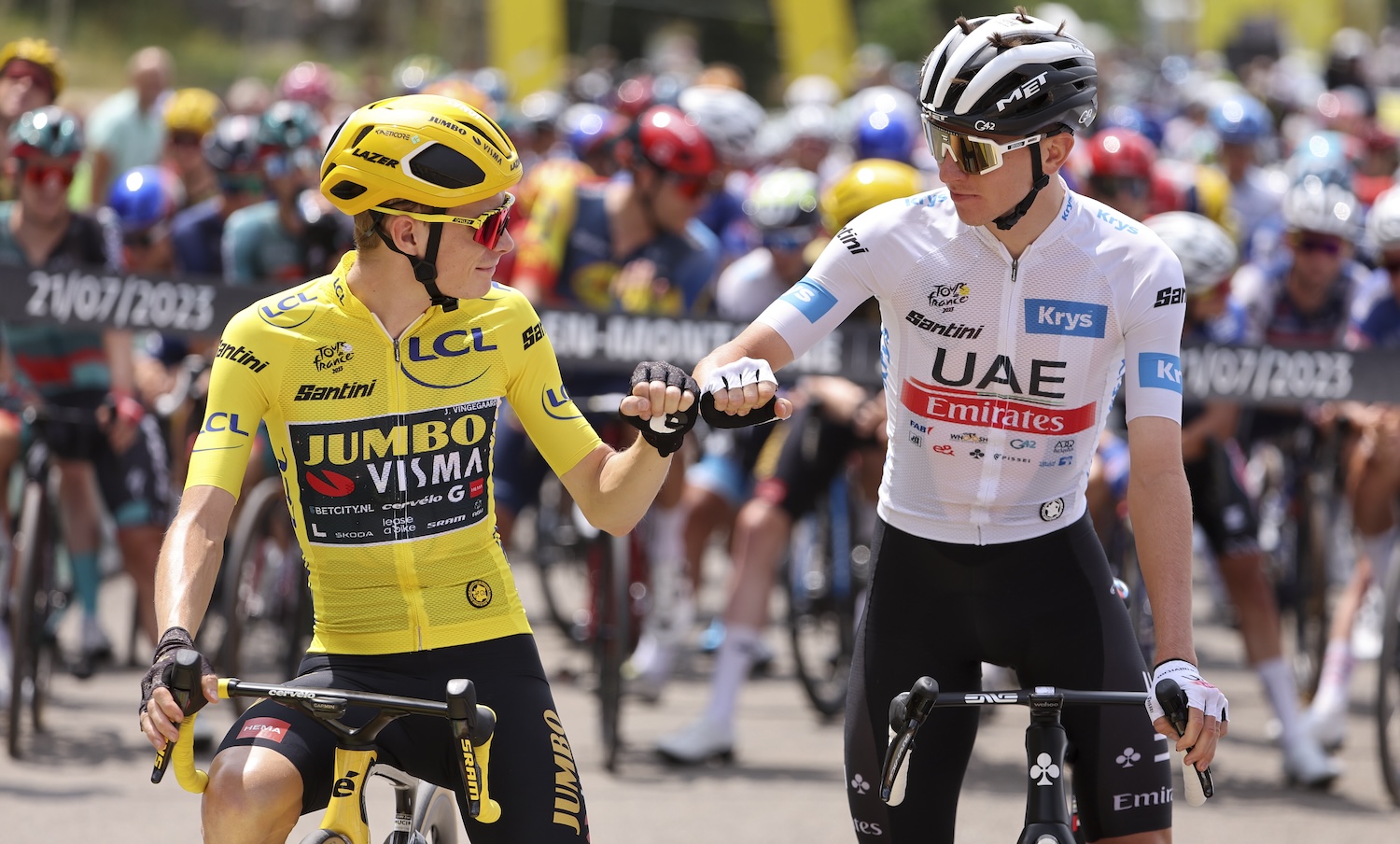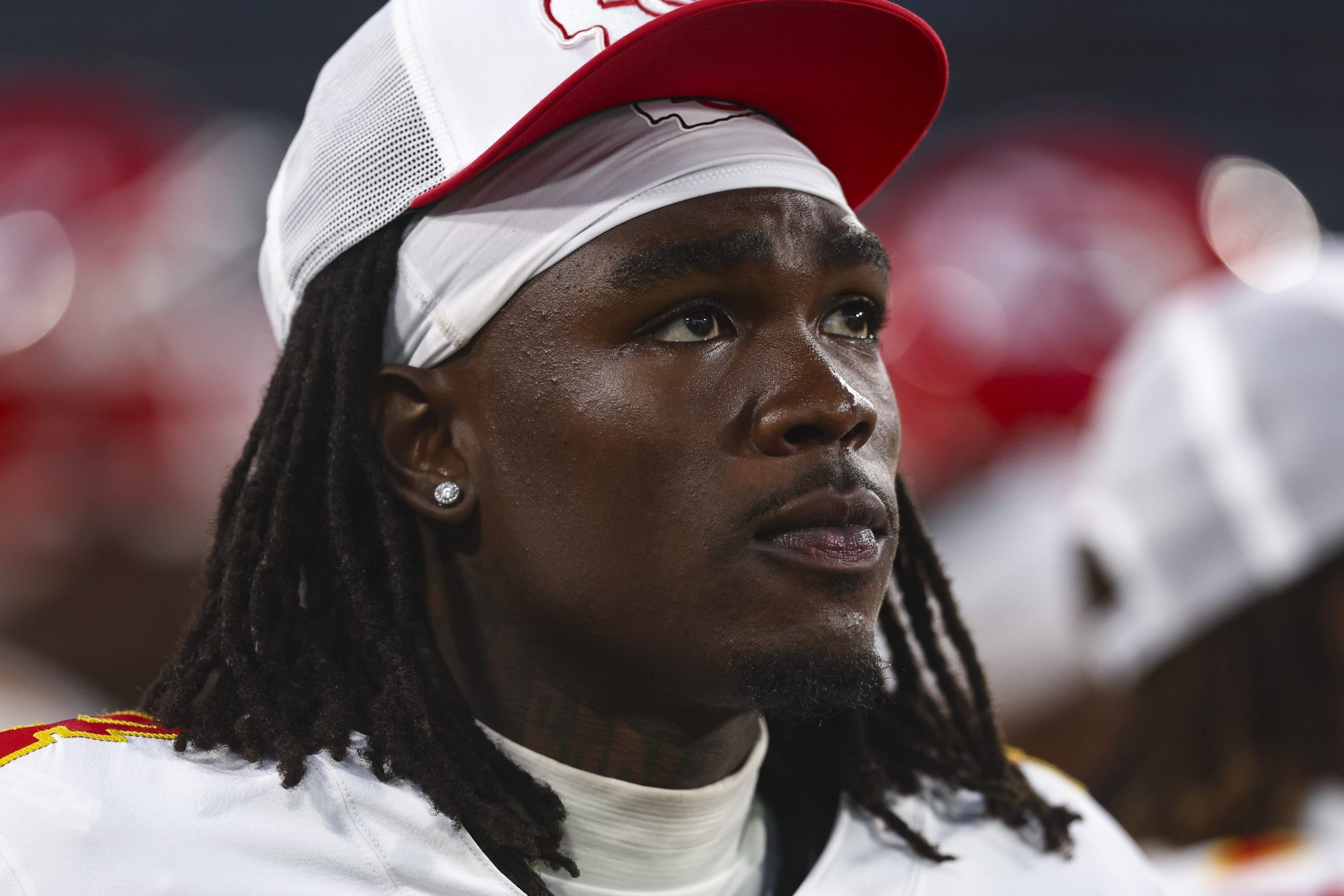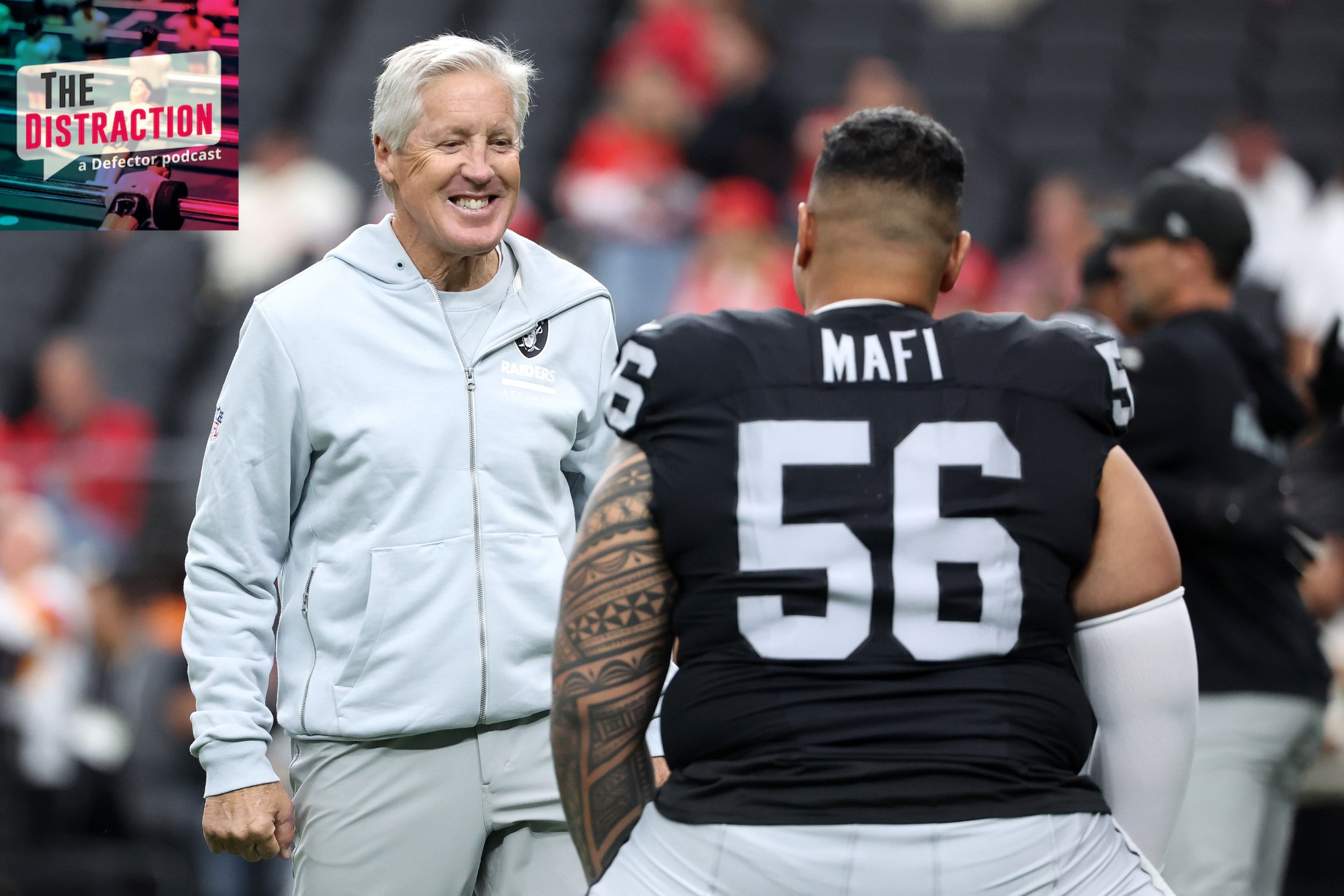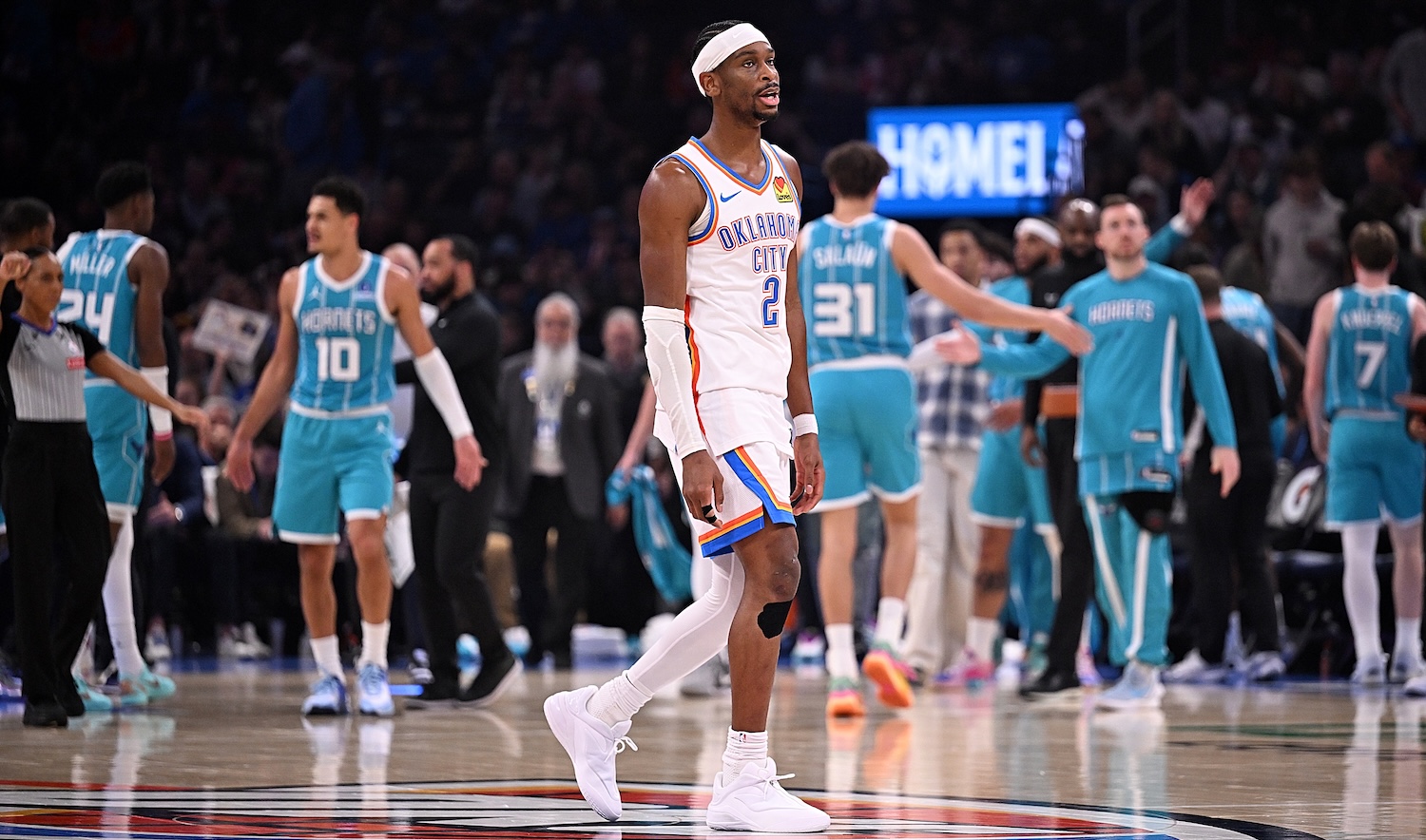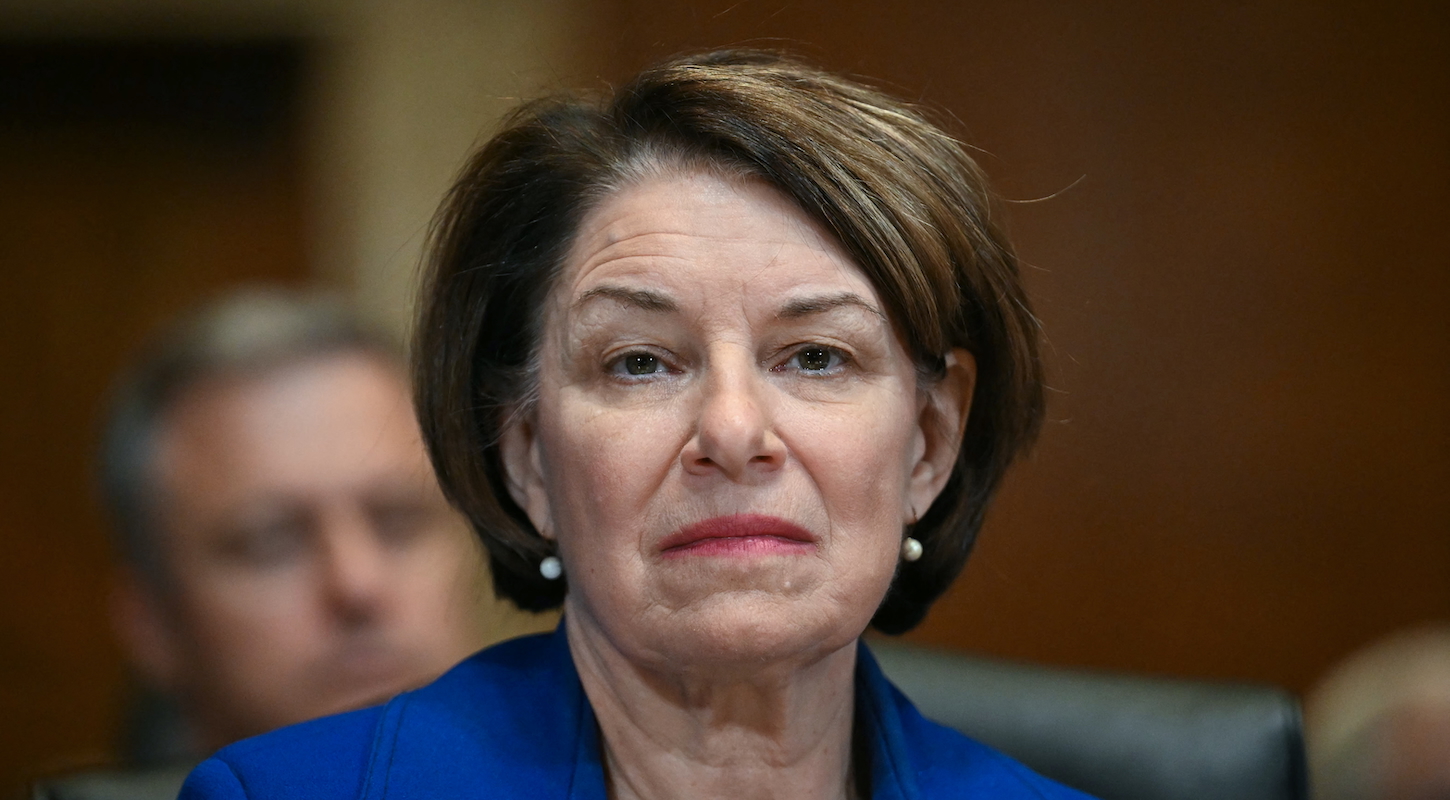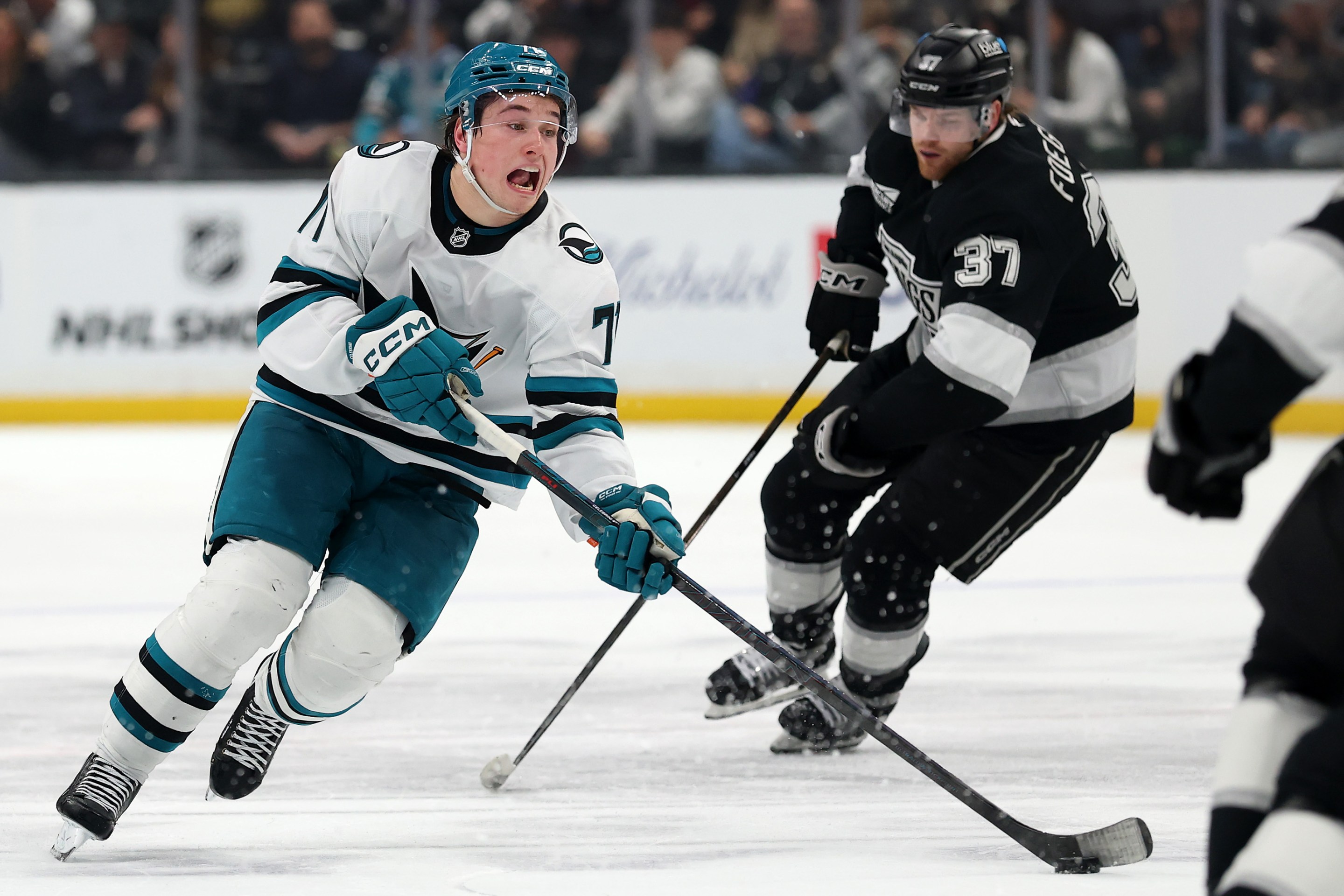Each Tour de France has its quirks, tweaking and deviating from an established formula here and there, but this year's edition will introduce elements that are totally new. The melange of riders and course that make up the 2024 Tour de France will be the most distinct of the modern era. The race will start and end in unprecedented places; interrupt the typically lifeless middle stretch of the race with a somewhat gimmicky, totally hostile experiment; and feature all of the biggest names in cycling, together, for the first time.
Start with the race's end. Cycling abhors an arena, but if one can be said to exist, it's the Champs-Élysées, where the past 48 Tours de France have finished. Typically the race concludes with a parade into Paris, with the winner's team decked out in yellow, sipping Champagne as fans toast their accomplishments. Everyone suffers at the Tour, but at least the finishers get a parade.
This year, for the first time in Tour de France history, nobody will ride into Paris. Preparations for the 2024 Olympics have kept the race from coming within 75 miles of the French capital. There won't be a parade, either. Thirty-five years after Greg LeMond beat Laurent Fignon on a final-day time trial to take the closest-ever edition of the Tour, the race will once again eschew the Champagne for real pain: an ass-kicking time trial along the Mediterranean coast. It should be beautiful, it might be consequential, and it will be painful. The organizers will hope for all three.
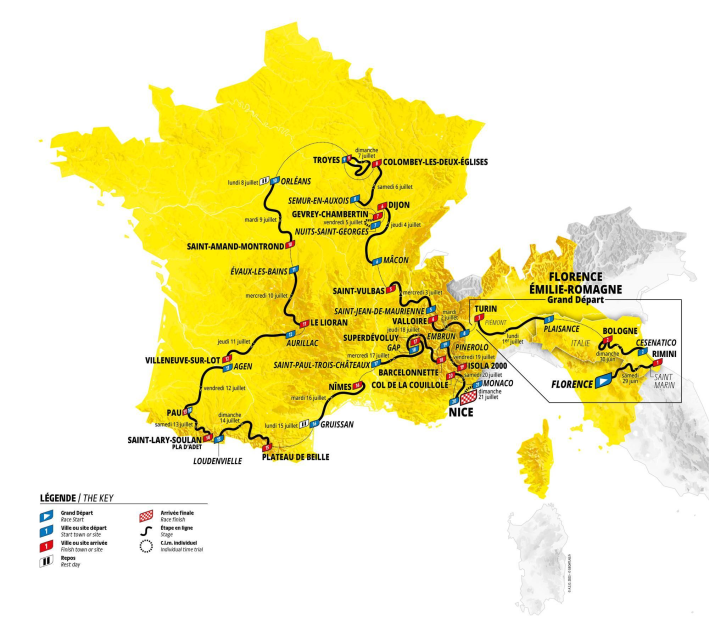
Tour organizers are always working within a set of boundaries to create the most telegenic and interesting course possible. Those boundaries include the often-foreign starts, anniversaries, and local heroes they intend to honor along the way. Above all they want good racing, which is a matter of narrative as much as anything. The monotonous dominance of Team Sky in the 2010s spurred a shift in philosophy, and the evolving theory of the race over the past decade has been fascinating to track.
The 2024 Tour is wholly distinct from, say, the Tour won by Sky in 2012. The old, predictable pattern of a ponderous start, tons of time-trialing, and an Alps-Pyrenees two-step across the second and third weeks made for some of the most boring Tours I've ever watched. Sky could outspend every other team and hire riders who could comfortably shepherd Chris Froome up every familiar climb. It might have been bland TV, but Sky simply filled the existing niche as well as they could. The problem was how straightforward it was for them to get the yellow jersey.
The most critical change was made in 2018: Organizers successfully reduced team size from nine to eight riders, making it more difficult for any one team to strangle the race. The UCI, cycling's governing body, initially resisted this change, though a quirk of cycling's structure is that the UCI is in conflict with and less powerful than the jumbled group of race organizers, such as the ASO, that run the Tour and wanted the change. Organizers also learned a lesson about balance from the lesser Grand Tours: Too much arduous climbing and overlong stages lead to detente instead of fireworks. The way to incentivize exciting racing is by reifying the importance of time bonuses, and craft shorter stages where winning and losing becomes more a matter of bravery and craft than unalloyed team fitness. Total distance is down; speed is up.
If Froome was a perfect rider for that era, then Tadej Pogačar is purpose-built for the new paradigm. The Slovenian announced his intentions with one of the most defiant shows of strength in recent memory when he won the 2020 Tour, then won again in 2021. The days of a bloc of black-clad Team Sky riders grimly staring at their power meters gave way to the rambunctious stylings of Pogačar. In other words, attrition gave way to action, as organizers desired.
While the tenor of the riding has been different, the economic contradictions of the sport are more pronounced than they were 10 years ago. Like Froome's Sky, Pogačar's UAE team is by far the richest in the peloton. The Emirati sovereign wealth fund is one of four involved at the highest level of cycling, alongside Saudi Arabia, Bahrain, and Kazakhstan. (Israel-Premier Tech is not sponsored by the Israeli government, just one of its wealthiest supporters.) Contrast that to Trek, the lone bike manufacturer that remains as a title sponsor, and you can track the decline of the old model: getting your brand name on TV by sponsoring a good team. One can see why the decline of live TV represents such a serious threat.
With all the oil money sloshing around the sport and with Red Bull set to join the party at this year's Tour, there's more genuine competition for top riders, to the degree that Sky's successor, Ineos, is reportedly struggling to keep pace. That also creates a larger gap between the upper echelon and the rest of the sport. In practice, that looks like Pogačar being supported by Joao Almeida, Adam Yates, and Juan Ayuso, each of whom could credibly fight for the top 10 with another team.
But UAE isn't the only superteam. For two years, it was almost impossible to imagine the sort of rider who could crack Pogačar, until Danish climber Jonas Vingegaard wrote the playbook in 2022: Drag him up to altitude, isolate him from his teammates, then punish his exuberance. Vingegaard's dethroning of Pogačar was not a reassertion of the old ways. Jumbo couldn't smother climbs like Sky did and the Dane is a significantly more willing attacker, though his victory on the Col du Granon in 2022 represented a triumph of teamwork under the new framework. Jumbo will be somewhat diminished this year, and this year's course will tax every team.
While the end of this year's Tour de France course represents the most significant departure from the norm, the beginning is almost as novel. The first three days take place in Italy, the first such start for the Tour, a long overdue "incongruity" organizers say they set out to amend. The first stage on Saturday traverses the Apennine spine of Italy, from Florence out to the Adriatic coast, with 3,600 feet of climbing across seven categorized climbs. It's a more difficult version of 2023's brutal opener. A second tough day follows, with only one reasonably chill 230-kilometer day through Italy serving as a setup for the race's entry into France with the fearsome Galibier.
The course can be as difficult or unique as organizers can dream it, but the riders must bring it to life. What makes this particular start to this particular Tour so fascinating is the quartet of big-time contenders who will contest the race: four riders who have cemented themselves at the top of the sport, but have never all faced off against each other in the same Grand Tour, let alone the Tour de France itself. Each contender is somewhat compromised, so it'll quickly become clear which of them has a serious chance.
Pogačar has been racing and winning lately, treating the Giro d'Italia field like NBA players treat 7-year-olds at summer camp. He will try to make history by completing the first Giro-Tour double since Marco Pantani's pharmacologically dubious 1998 two-parter, a bold gambit made even more audacious by the fact that Pogačar lost the last two Tours to Vingegaard. It'd be like missing two consecutive free throws, then shooting the third with your off hand.
Despite all that, Pogačar enters the race as the favorite because Vingegaard hasn't raced in almost three months. In April, he crashed at high speed into a Basque ditch, breaking his collarbone and ribs, and puncturing his lung. Vingegaard was stretchered away from the race in an oxygen mask, lying in a hospital for 12 days at a time when he was supposed to be transitioning toward a big block of altitude training.
Pogačar's other advantage is that the crash that hospitalized Vingegaard also took out his other two principal rivals, Remco Evenepoel and Primož Roglič, though neither suffered the same degree of injury as Vingegaard. Evenepoel, cycling's little crown prince, races like a mini Pogačar, attacking with determination and earning himself a double world championship, a Grand Tour, and two monuments all by age 23. On his best day, he's as good as Pogačar, a less steady puncheur with more time-trial juice. His problem, at least when competing with the best riders in the world in three-week races, is consistency. "Remco can win the Tour, but only if he rides like Remco for 21 days out of 21," Movistar manager Eusebio Unzué said earlier this year. "If he only rides like Remco for 20 days out of 21, then it’ll be difficult."
Roglič is a faintly tragic rider, probably the best active racer in the peloton without a yellow jersey. After losing to Pogačar on the final day in 2020, he was surpassed by Vingegaard for supremacy within their Jumbo-Visma team, forced to play a supporting role rather than seek revenge. He's moved over to Red Bull-Bora for a chance to topple both champions. It is rare to get this many prime contenders jockeying for the same yellow jersey. Typically there are fewer serious aspirants—more teams and riders might choose to chase the Giro and Vuelta a España and steer clear of the fourth Pogačar-Vingegaard duel—and there hasn't been narrative intrigue like this since Alberto Contador was still racing.
The ASO knew last year that the Big Four would be coming. The 2024 Tour is not quite as mountainous, featuring 3,000 fewer meters of climbing and three fewer climbs rated Category 2 or harder. Each of this year's four summit finishes will be atop steady ascents, ramp-like climbs that will be in theory simpler to control than the weird pitchiness of the Col de la Loze or the Cambasque. To compensate, this year's edition features the most individual time-trial kilometers (59, almost three times the distance of last year's) in 11 years. If the nastiness of the climbs is somewhat tempered and more reminiscent of the Froome era, their distribution within the Tour is more novel.
Then, there's the gravel. The Tour has flirted with making its avian climbers deal with the gnashing conditions of the Paris-Roubaix cobbles, with limited success and a ton of groaning. Is the point to injure riders and force selections by a cynical combination of luck and bike handling? How entertaining is it if the Tour could be decided by who crashes and who doesn't on a day of cyclocross racing? Vingegaard and his team have complained about the stage, which will force the peloton onto the narrow, tortuous roads of the Champagne region for 32 kilometers of off-roading. The precedent here is Stage 4 of the 2022 Tour de France Femmes, which was a total shitshow, albeit an entertaining one.
Tour de France route designer Thierry Gouvenou said the gravel day was necessary to ensure something of consequence happened during the middle of the race. "We had to come up with something clever," he told L'Equipe, which is a pretty interesting admission of the need to manufacture drama at the risk of everyone's collarbones, in the name of better TV. The common thread between the gravel day, the unique cadence of this year's Tour, and the closing time trial is unpredictability. That's been a virtue of the Tour's evolution over the last decade. But has the organizers' commitment gone too far?
I don't think so. If the best possible Tour is one in which the greatest number of riders have a real chance to win, then the best possible route is one where those riders will be meaningfully tested, forced to rely on their individual bravery and team-wide tactical brilliance. The likelihood of early time gaps after the tough start to the race should force some fascinating adjustments, especially as everyone's form is so unknown, and while there are three weeks of racing between the start in Italy and the final day in Nice, the possibility of a dramatic conclusion is tantalizing. That's what organizers want. The beauty of the Tour is that there's no guarantee they'll get it.
